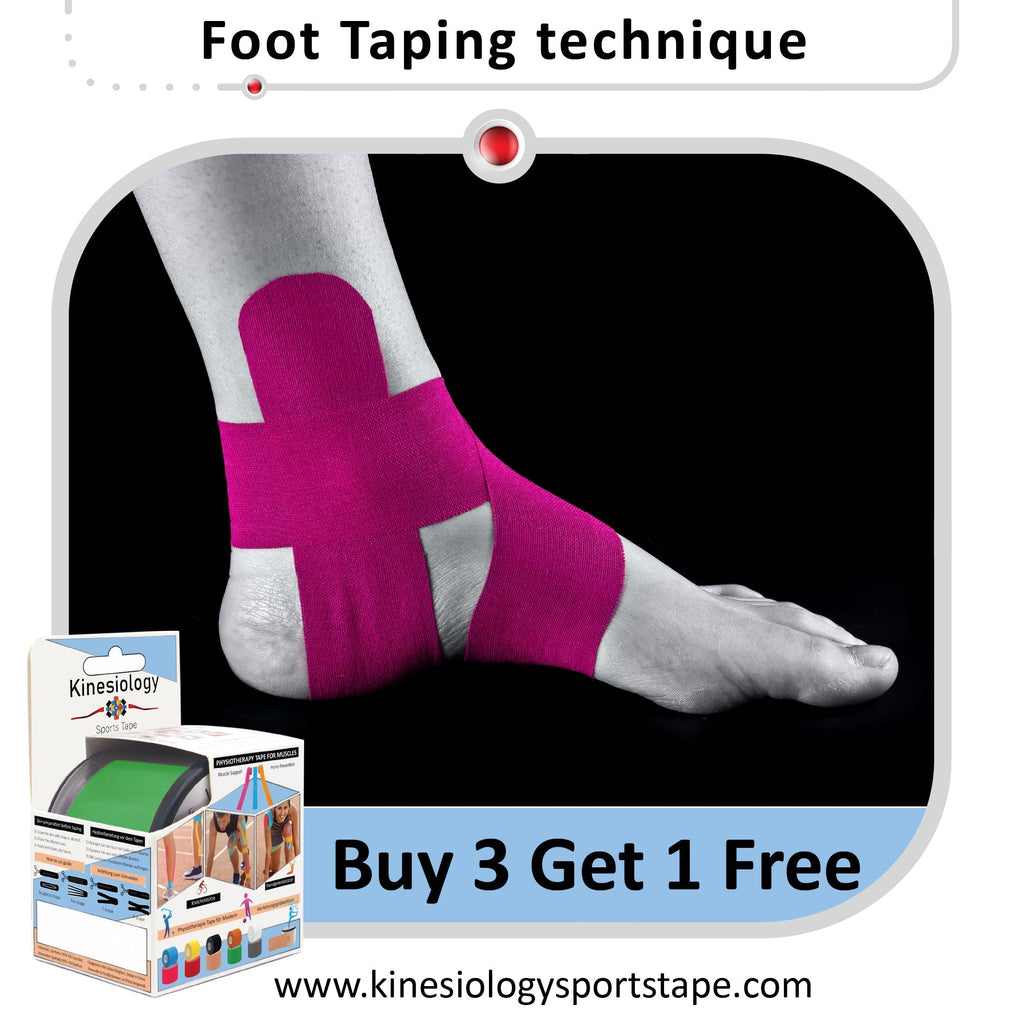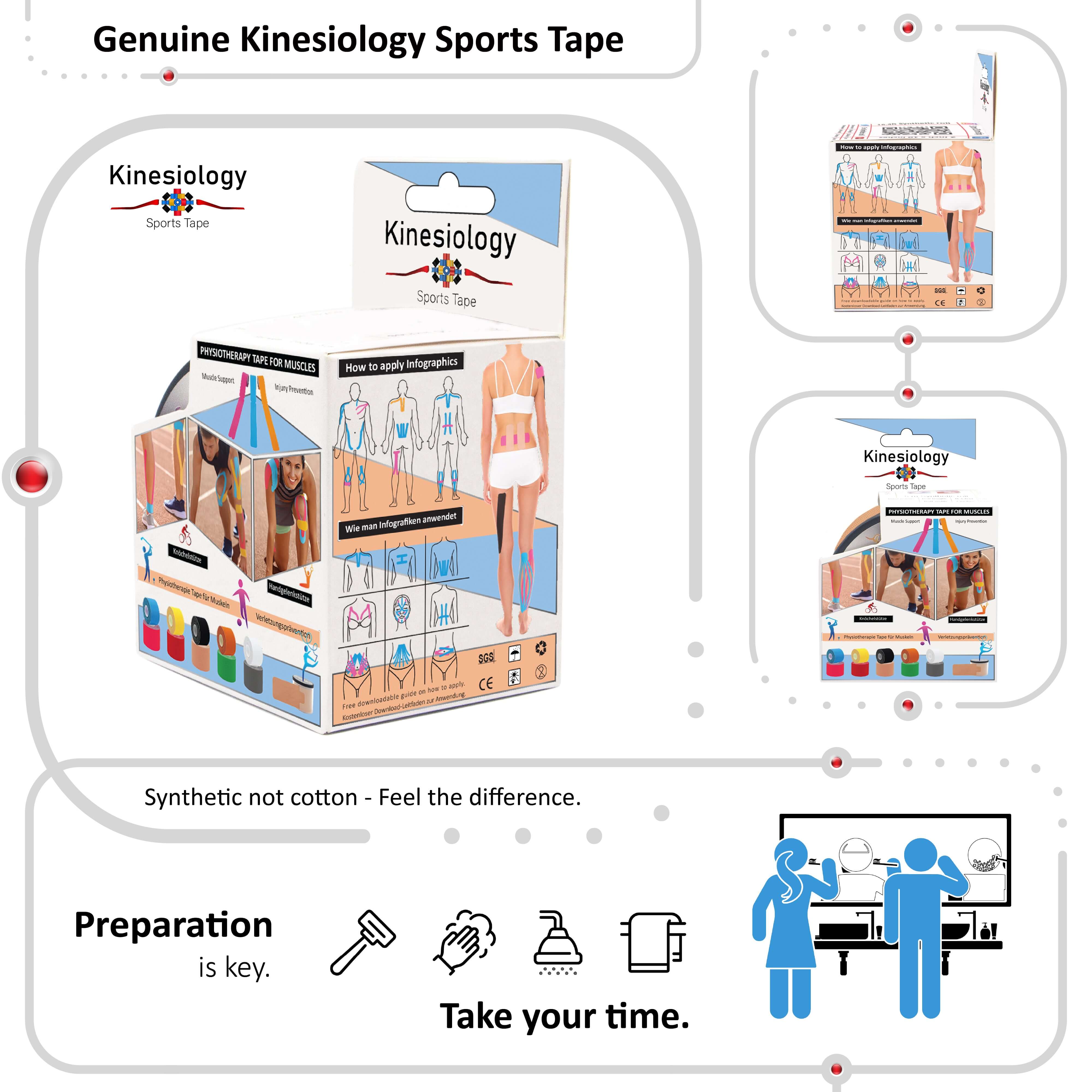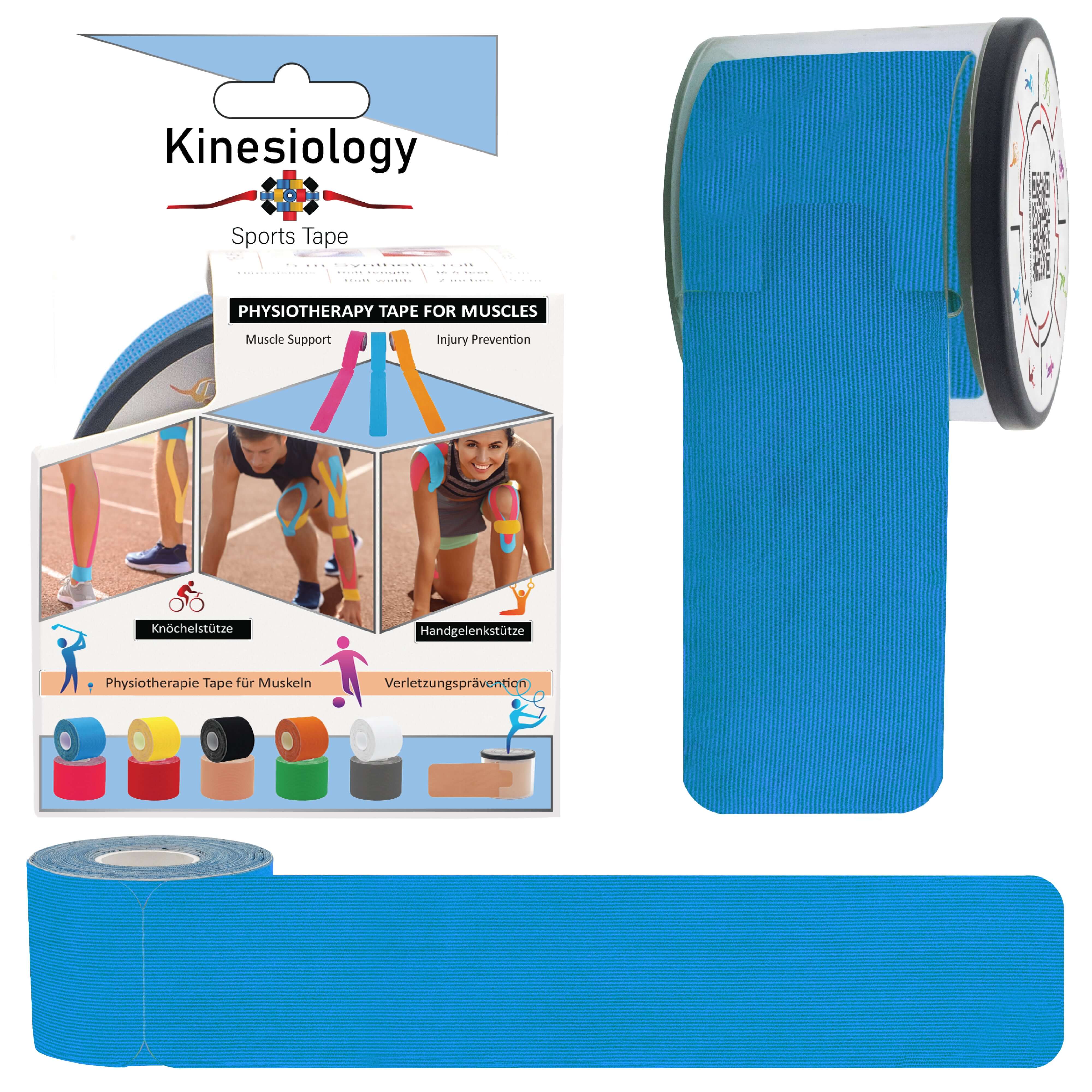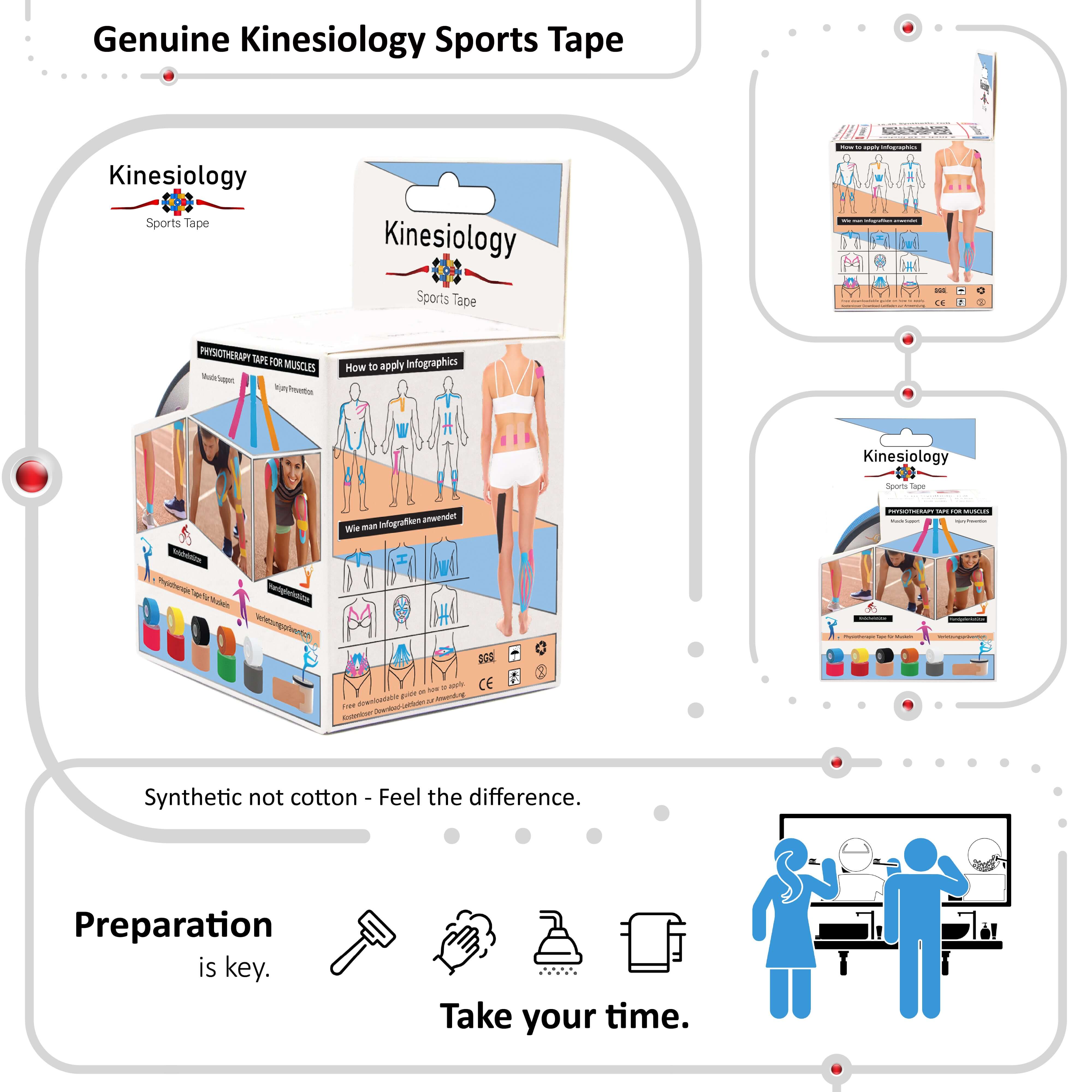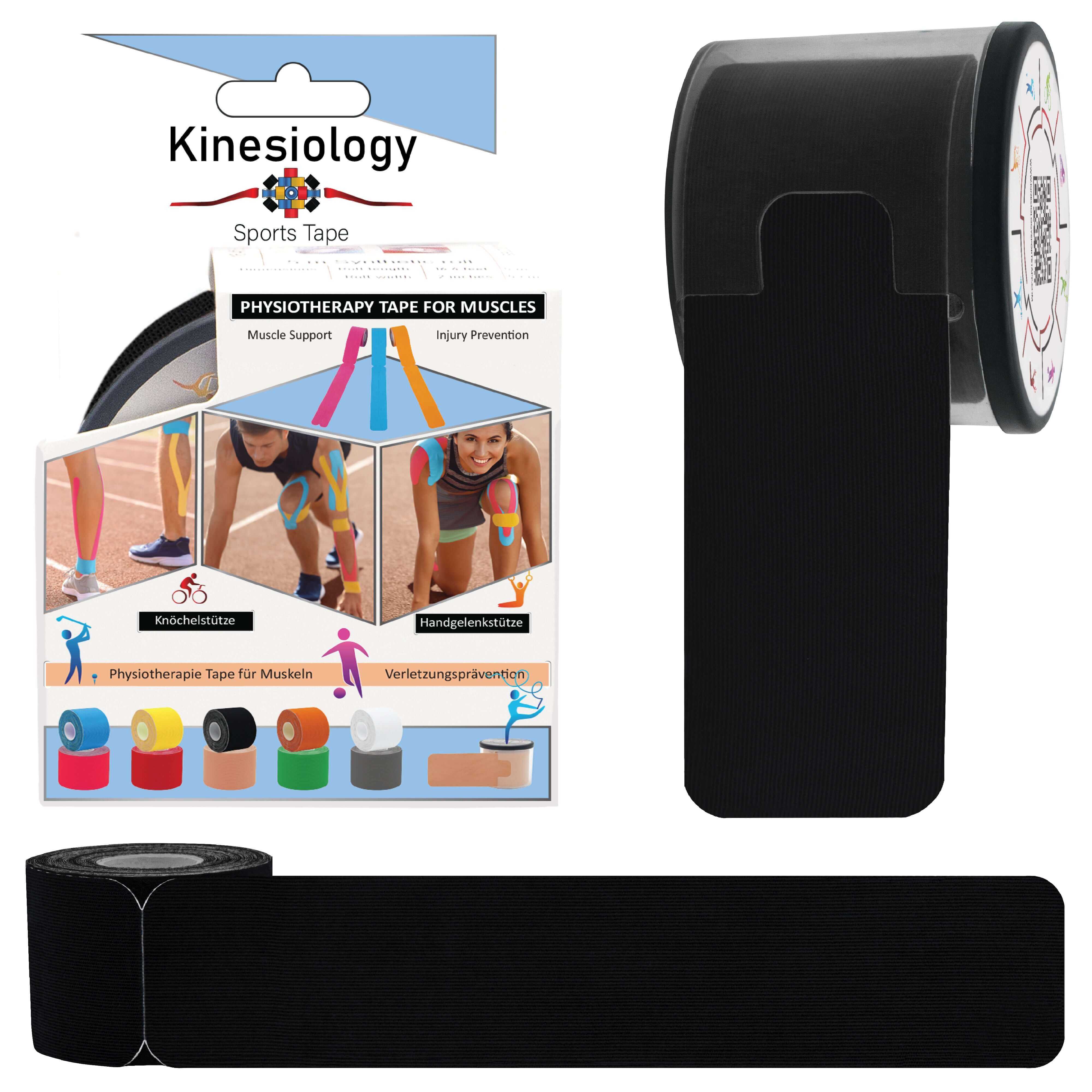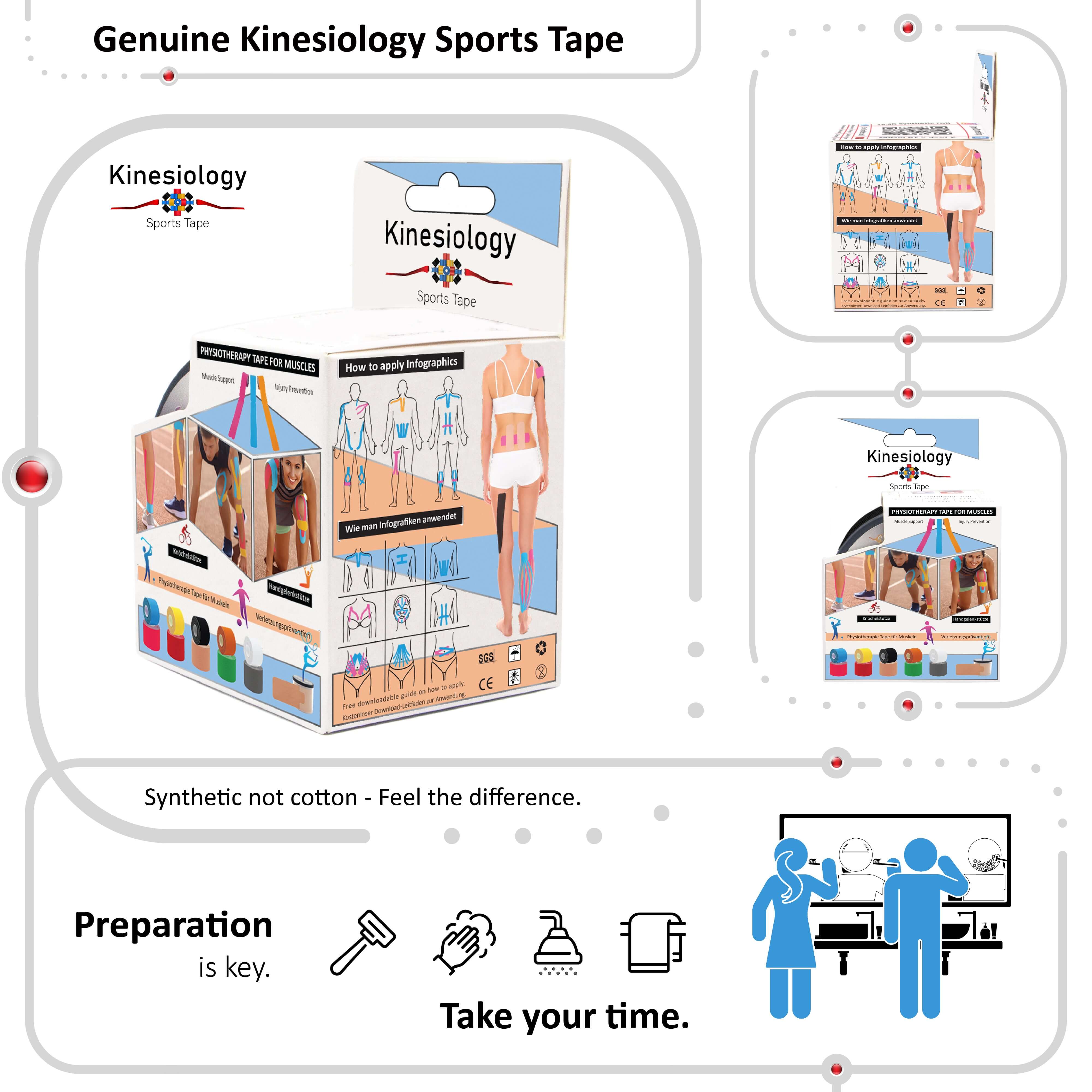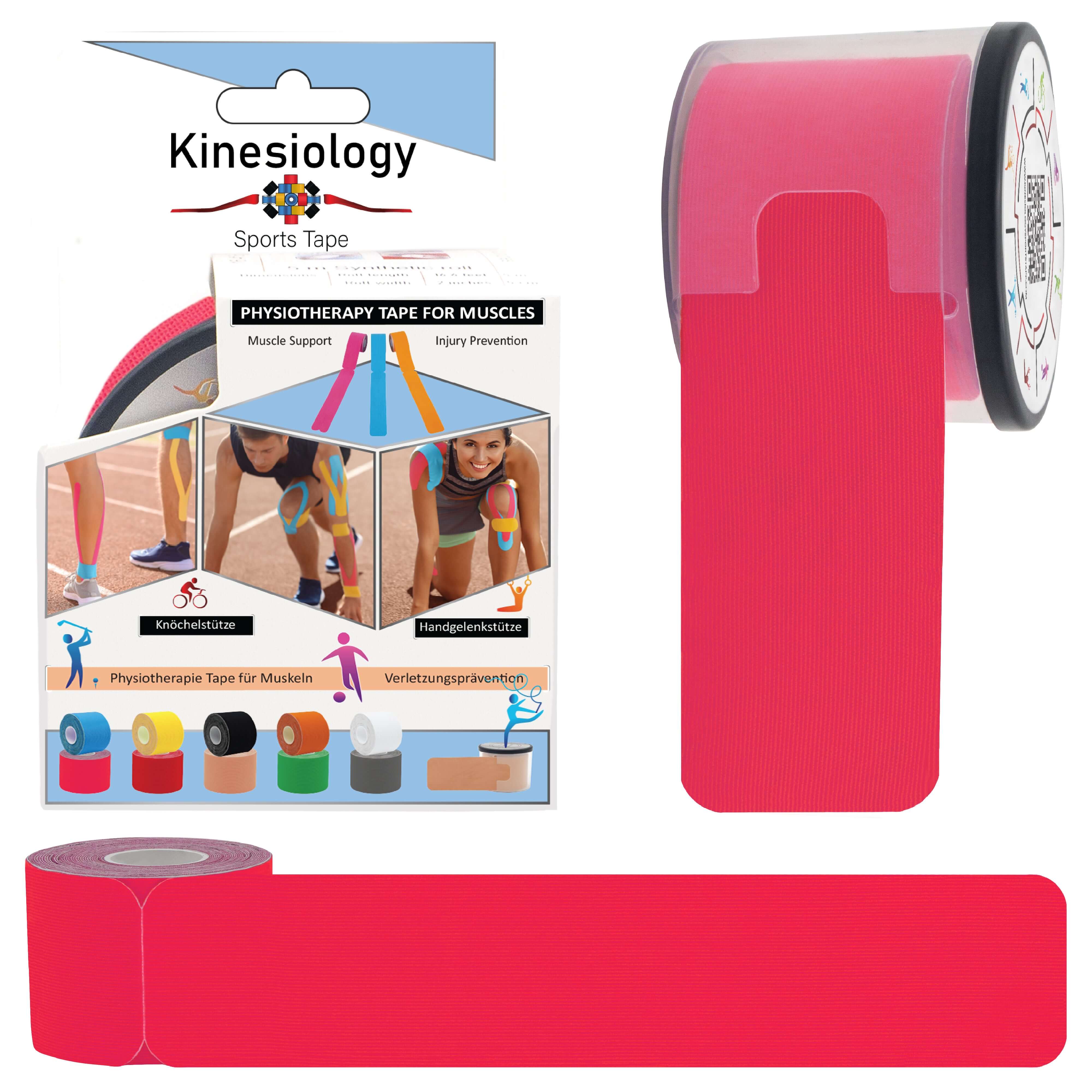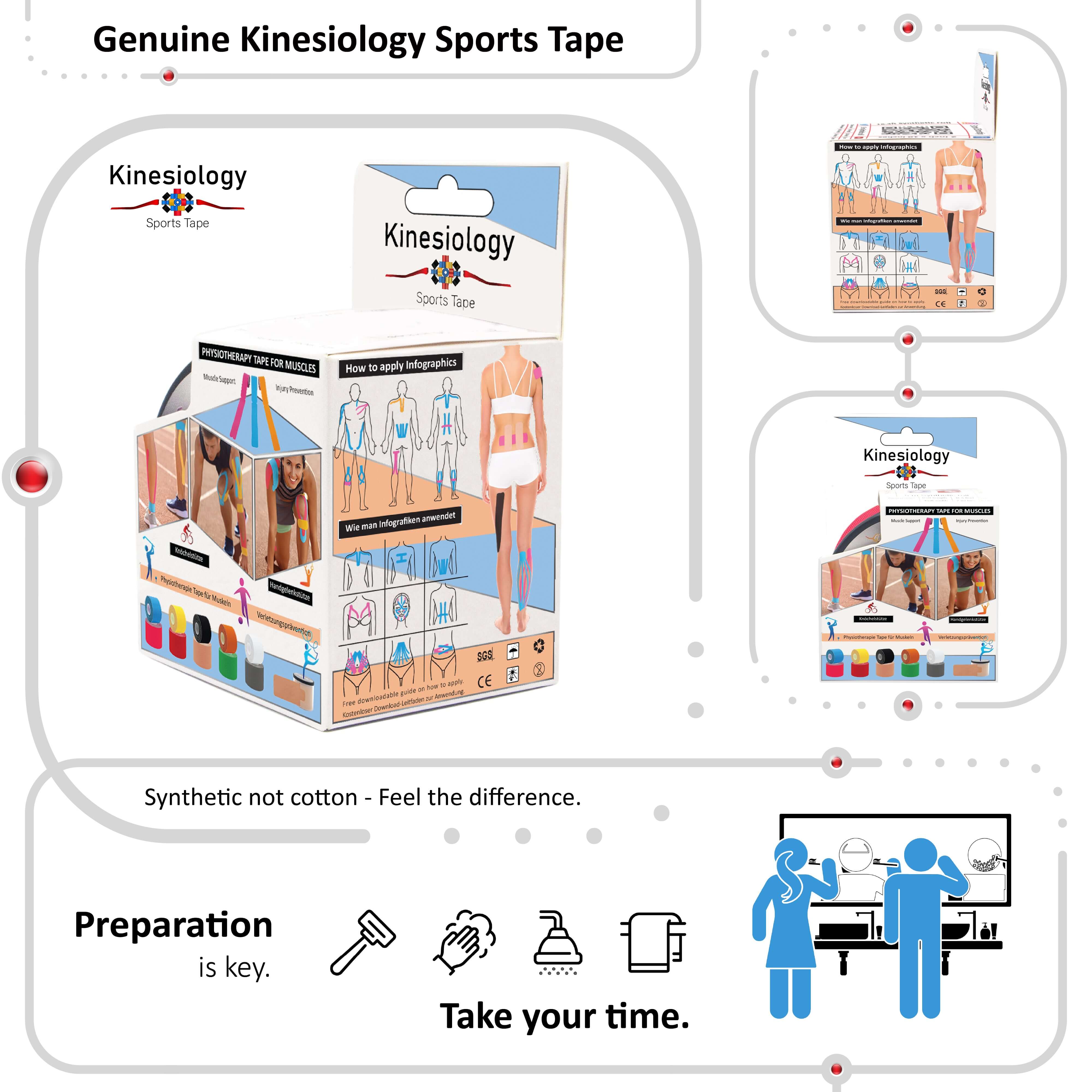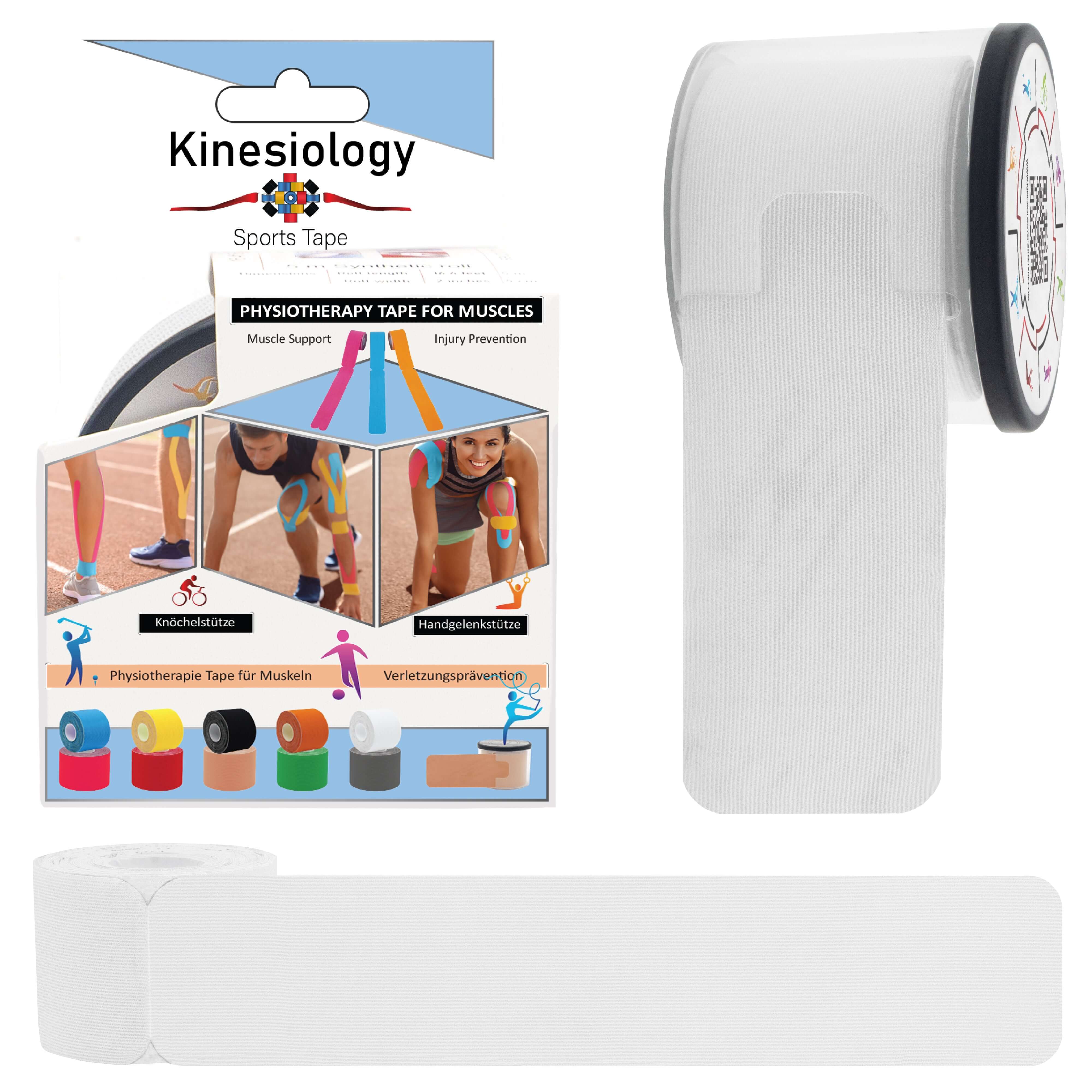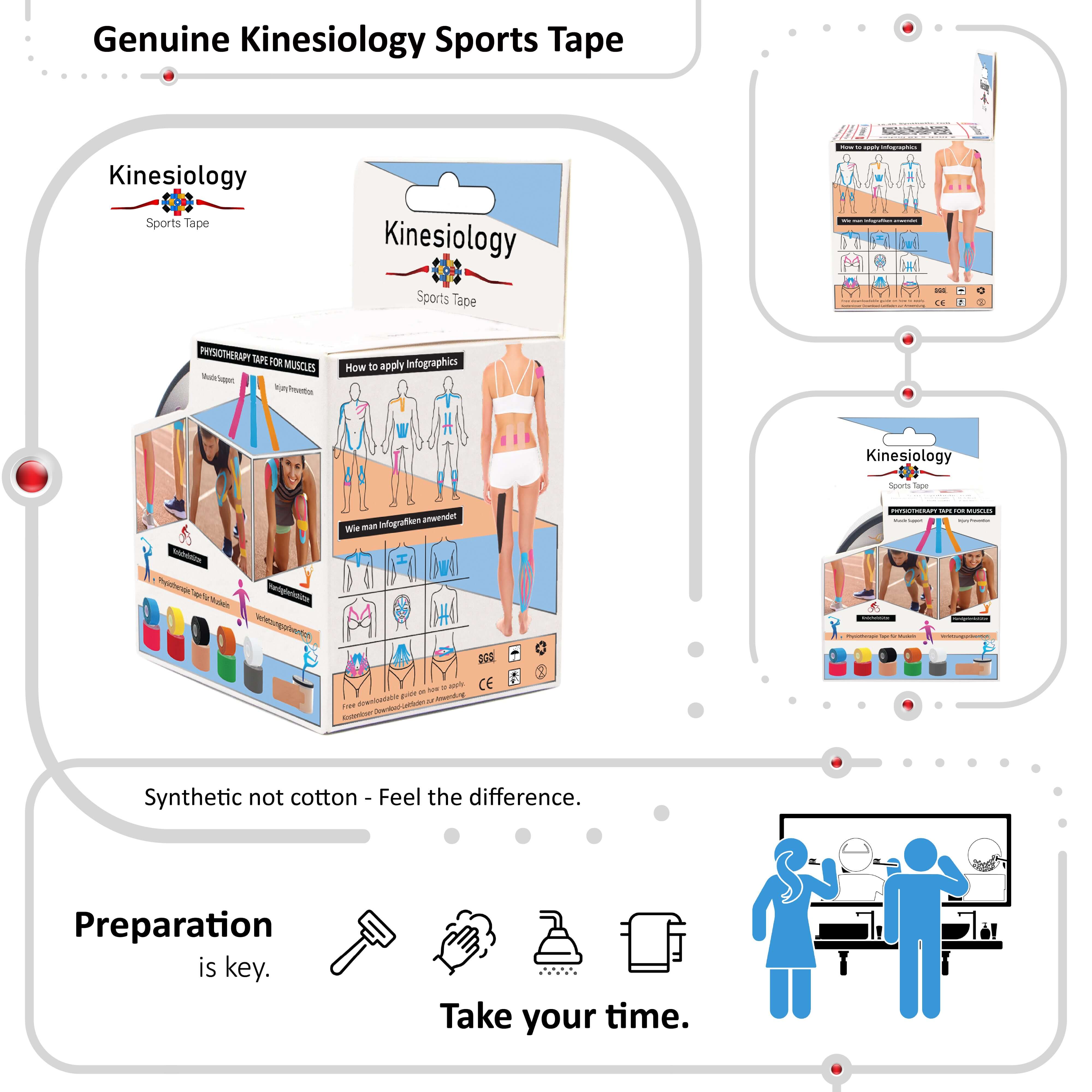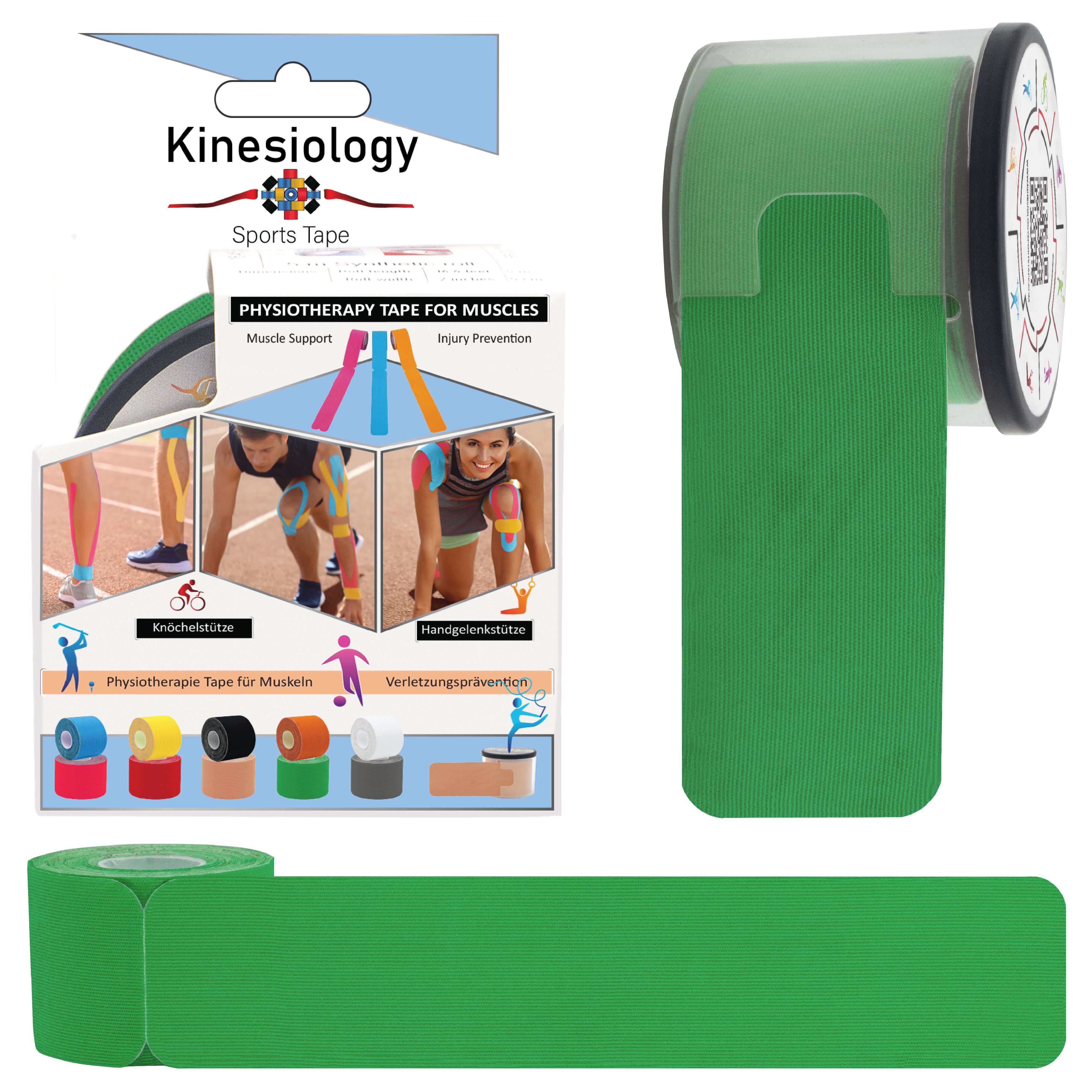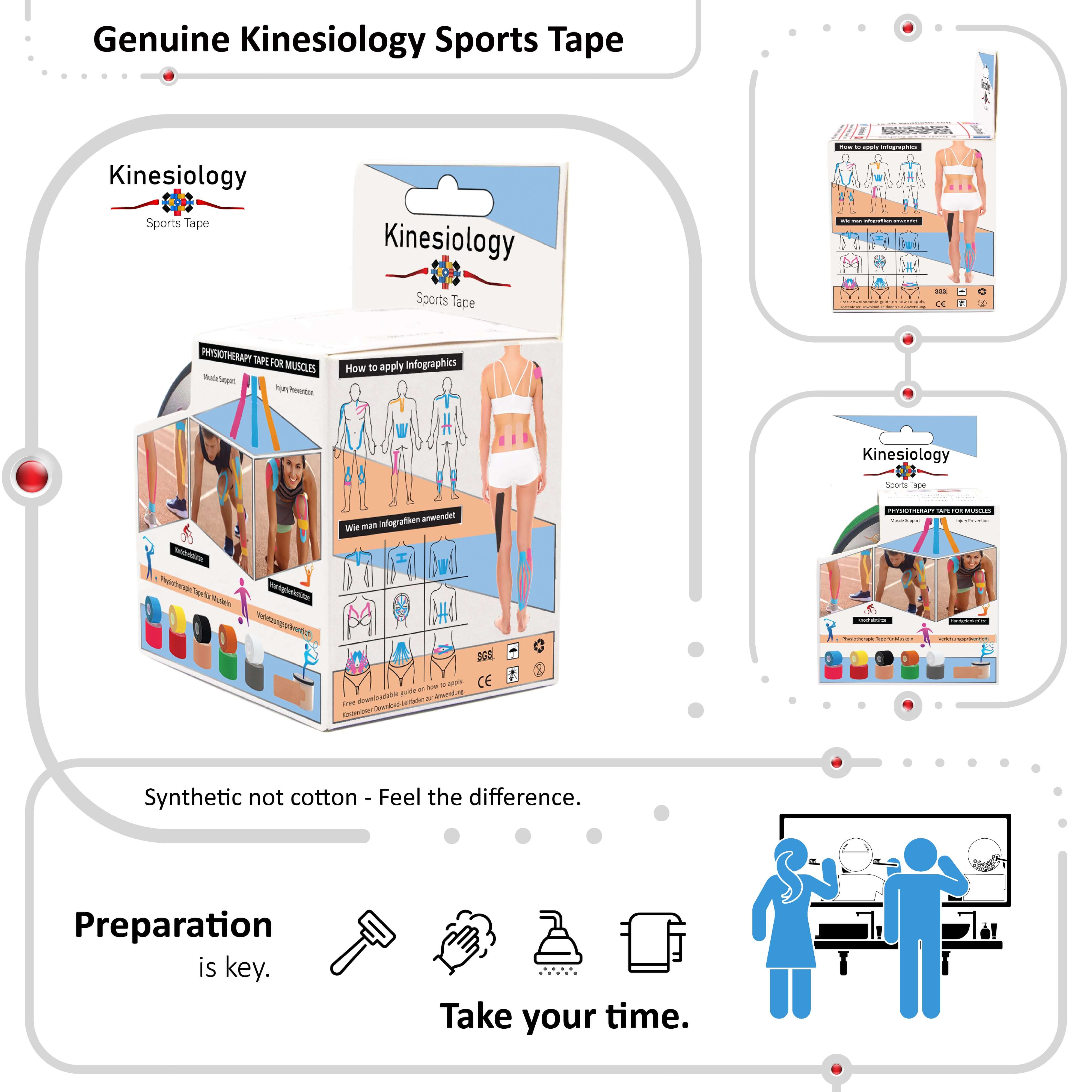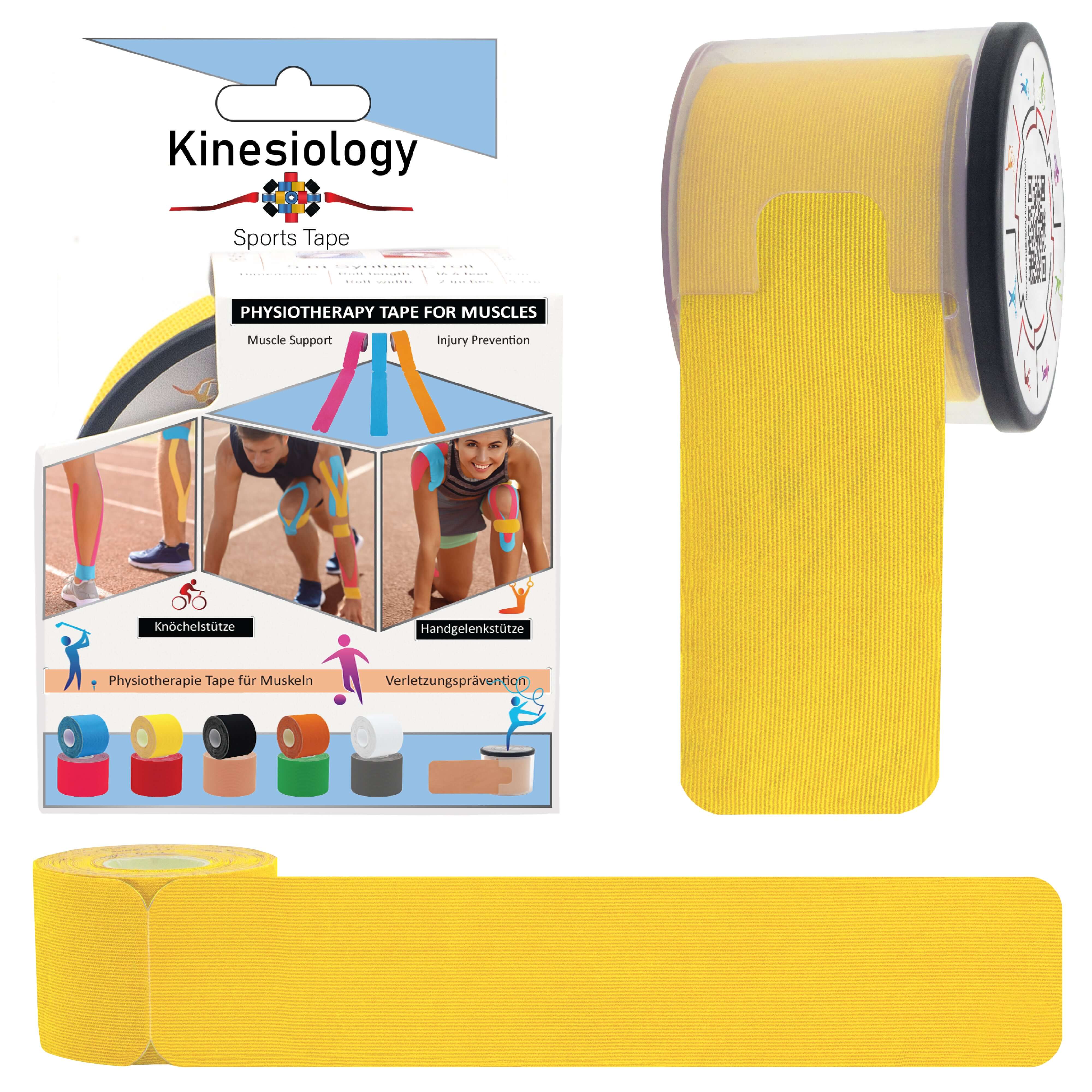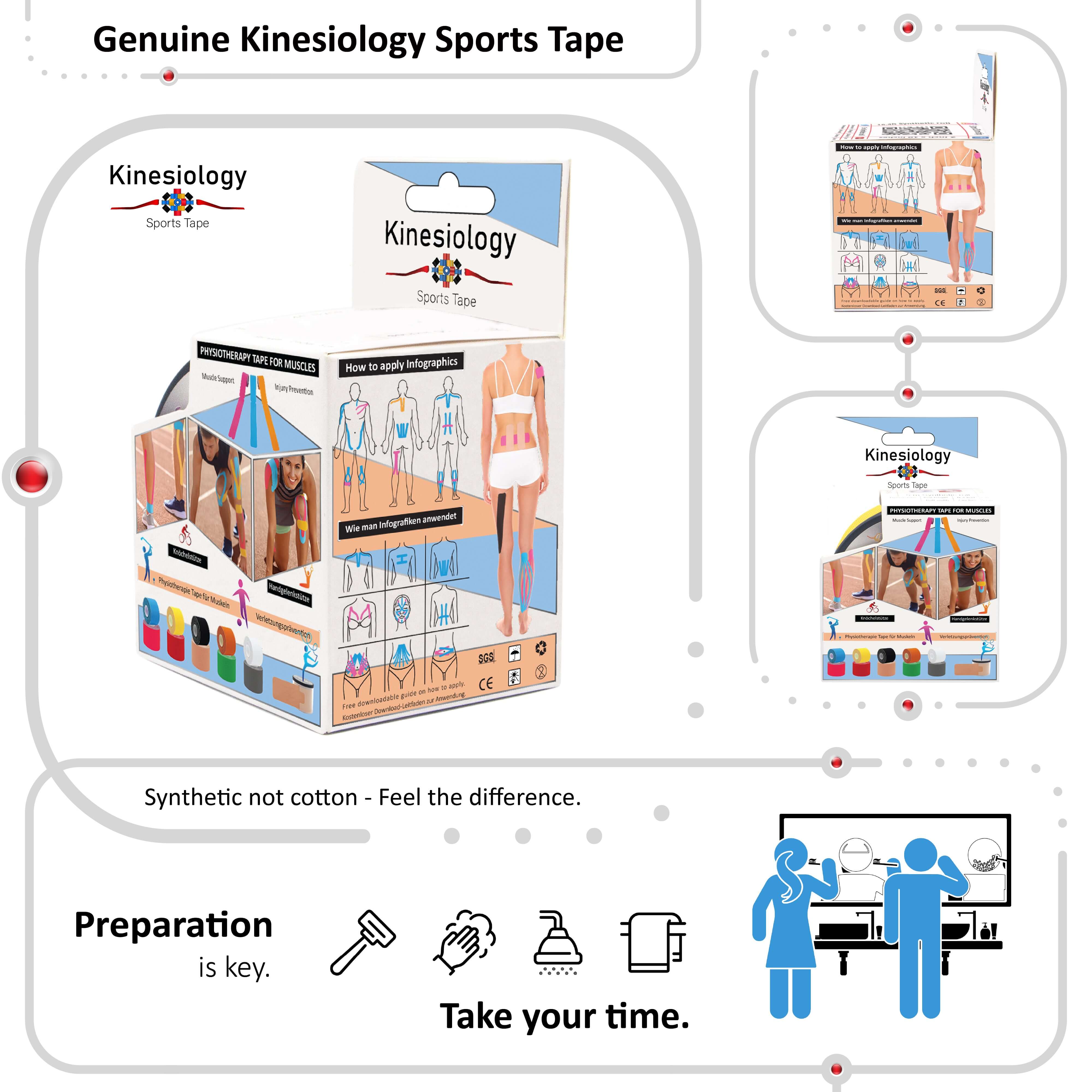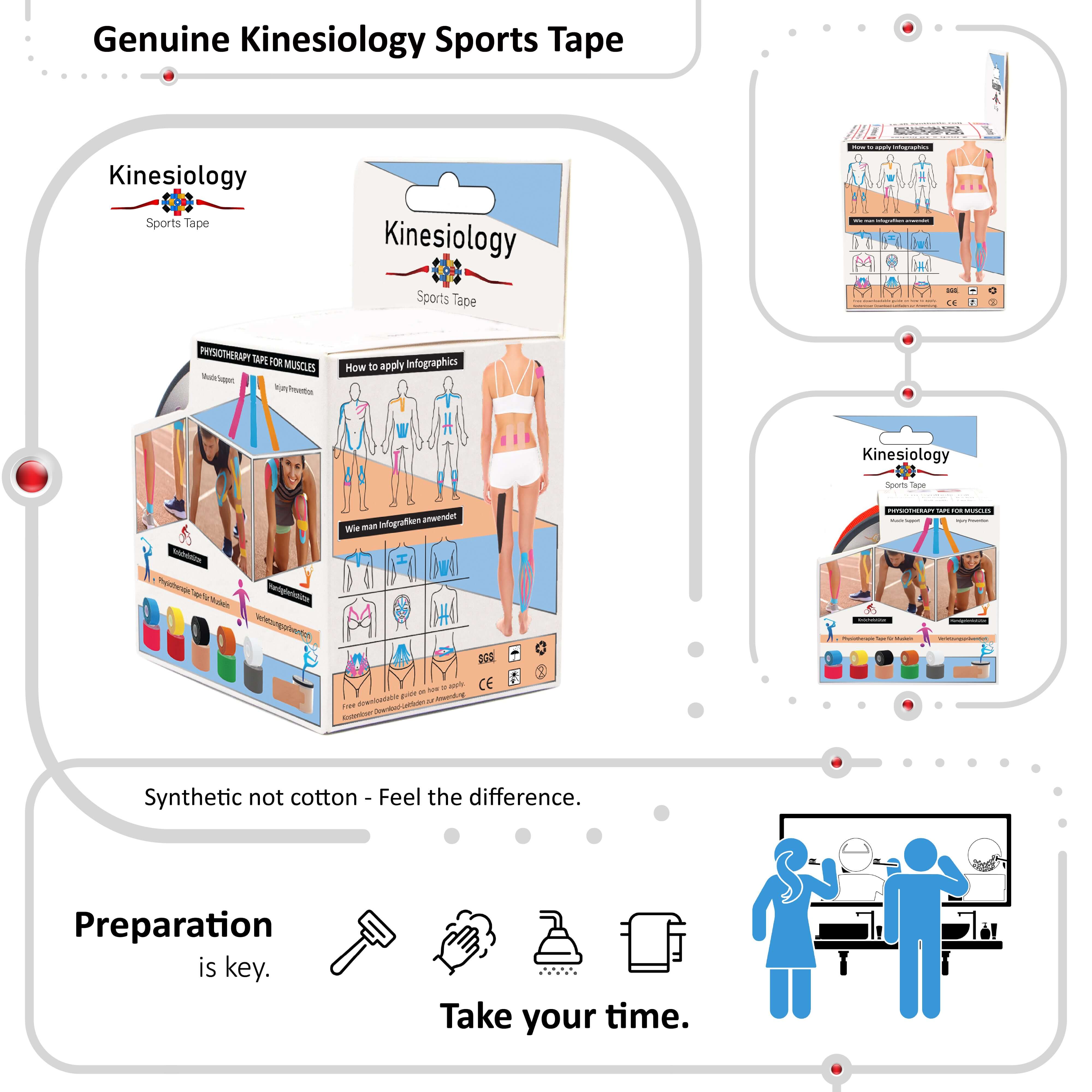
Kinesiology Tape for Pregnancy Support and Pain Relief: Complete Maternal Wellness Guide

Pregnancy brings profound physical changes that can create unique challenges for expectant mothers, with up to 80% of pregnant women experiencing some form of musculoskeletal discomfort during their pregnancy journey [1]. The growing belly, shifting center of gravity, hormonal changes, and increased joint laxity can lead to various aches and pains that significantly impact daily activities and quality of life. Traditional pain management options during pregnancy are often limited due to safety concerns for both mother and baby, making kinesiology tape an increasingly popular and valuable therapeutic option for pregnant women seeking safe, effective relief.
Kinesiology tape offers a unique solution for pregnancy-related discomfort because it provides therapeutic benefits without the use of medications or invasive procedures [2]. The tape's gentle, supportive properties make it particularly well-suited for the sensitive needs of pregnant women, offering pain relief and functional support while accommodating the continuous changes occurring throughout pregnancy. Its ability to provide support while maintaining full range of motion is especially valuable during pregnancy when mobility and comfort are essential for maternal well-being.
Research has demonstrated the safety and effectiveness of kinesiology tape during pregnancy, with studies showing significant improvements in pain levels, functional capacity, and quality of life for pregnant women with various musculoskeletal complaints [3]. The tape's non-pharmacological approach to pain management makes it an attractive option for women who prefer to avoid medications during pregnancy or who need additional support beyond what traditional treatments can provide.
The physiological changes of pregnancy create specific patterns of discomfort that can benefit from targeted kinesiology tape applications. Lower back pain, round ligament pain, pelvic girdle pain, and abdominal discomfort are among the most common complaints that respond well to appropriate taping techniques [4]. Understanding these pregnancy-specific conditions and how kinesiology tape can address them is crucial for maximizing therapeutic outcomes while ensuring safety for both mother and baby.
This comprehensive guide explores the science behind kinesiology tape's effectiveness during pregnancy, provides detailed application techniques for common pregnancy-related conditions, and offers evidence-based strategies for safe and effective use throughout all stages of pregnancy. Whether you're experiencing early pregnancy discomfort or dealing with the challenges of the third trimester, understanding how to properly utilize kinesiology tape can be a valuable component of your prenatal care strategy.
Understanding Pregnancy-Related Physical Changes and Pain Patterns
Pregnancy creates a cascade of physiological changes that affect virtually every system in the body, with the musculoskeletal system experiencing particularly significant adaptations [5]. Understanding these changes is essential for effective kinesiology tape application and pregnancy pain management.
The growing uterus and developing baby create progressive changes in the mother's center of gravity, leading to postural adaptations that can stress various muscle groups and joints [6]. As the belly expands, the lumbar spine typically increases its lordotic curve to maintain balance, placing additional stress on the lower back muscles and facet joints. This postural change, combined with the added weight of the growing baby, contributes to the high prevalence of lower back pain during pregnancy.
Hormonal changes during pregnancy, particularly increased levels of relaxin, estrogen, and progesterone, cause ligaments and joints throughout the body to become more lax and mobile [7]. While this increased flexibility is necessary to accommodate the growing baby and prepare for childbirth, it can also lead to joint instability and pain. The sacroiliac joints and pubic symphysis are particularly affected by these hormonal changes, often resulting in pelvic girdle pain.
The expanding uterus places increasing pressure on surrounding structures, including muscles, ligaments, and organs. The round ligaments, which support the uterus, must stretch significantly as the baby grows, often causing sharp, shooting pains in the lower abdomen and groin area [8]. This round ligament pain is one of the most common complaints during the second trimester and can significantly impact daily activities.
Abdominal muscle changes during pregnancy create additional challenges for core stability and support. As the baby grows, the rectus abdominis muscles stretch and may separate along the midline, a condition called diastasis recti [9]. This separation can reduce the effectiveness of the abdominal muscles in providing core stability, placing additional stress on the back muscles and contributing to lower back pain.
Weight gain during pregnancy, while necessary for healthy fetal development, places additional stress on weight-bearing joints and can exacerbate existing musculoskeletal issues [10]. The feet and ankles are particularly affected, with many women experiencing swelling, arch pain, and changes in foot mechanics that can contribute to discomfort throughout the lower extremity kinetic chain.
Sleep disturbances are common during pregnancy due to physical discomfort, frequent urination, and difficulty finding comfortable positions [11]. Poor sleep quality can exacerbate pain perception and reduce the body's ability to recover from daily stresses, creating a cycle of discomfort that can significantly impact quality of life.
The Science Behind Kinesiology Tape's Safety and Effectiveness During Pregnancy
The use of kinesiology tape during pregnancy is supported by both its gentle mechanism of action and extensive research demonstrating its safety for expectant mothers [12]. Understanding the scientific basis for its effectiveness helps explain why kinesiology tape has become such a valuable tool for pregnancy-related pain management.
The non-pharmacological nature of kinesiology tape makes it particularly appealing during pregnancy when medication use is often restricted or discouraged [13]. The tape works through mechanical and neurological mechanisms that don't involve systemic absorption or chemical intervention, making it safe for both mother and developing baby. This safety profile allows for extended use throughout pregnancy without concerns about cumulative effects or drug interactions.
Pain modulation through the gate control mechanism provides immediate relief for many pregnancy-related discomforts. The sensory input from kinesiology tape can inhibit pain signals at the spinal cord level, reducing the perception of pain without affecting important protective sensations [14]. This pain relief mechanism is particularly valuable during pregnancy when other pain management options may be limited or contraindicated.
The mechanical support provided by kinesiology tape can help address the postural changes and increased joint laxity that occur during pregnancy [15]. The tape's elastic properties allow it to provide dynamic support that adapts to the changing body while maintaining the flexibility necessary for daily activities. This support can help reduce stress on overworked muscles and provide stability to lax joints without restricting movement.
Circulatory benefits of kinesiology tape are particularly relevant during pregnancy when circulation changes and swelling are common concerns [16]. The lifting effect created by the tape increases subcutaneous space, promoting better circulation and lymphatic drainage. This improved circulation can help reduce swelling, particularly in the lower extremities, and may help prevent some of the circulatory complications that can occur during pregnancy.
The psychological benefits of kinesiology tape should not be underestimated during pregnancy when anxiety and stress about physical changes are common [17]. The visible support provided by the tape can increase confidence and provide a sense of security that may help reduce anxiety about movement and activity. This psychological support can be particularly valuable for women experiencing their first pregnancy or those with previous pregnancy complications.
Research studies have consistently demonstrated the safety and effectiveness of kinesiology tape during pregnancy. A systematic review published in the Journal of Pregnancy found that kinesiology tape significantly reduced pregnancy-related lower back pain without any adverse effects on mother or baby [18]. Another study showed that kinesiology tape application during pregnancy improved sleep quality and reduced pain-related disability.
Essential Safety Considerations for Pregnancy Applications
While kinesiology tape is generally considered safe during pregnancy, specific safety considerations and precautions must be observed to ensure optimal outcomes for both mother and baby [19]. Understanding these safety guidelines is crucial for healthcare providers and pregnant women considering kinesiology tape use.
Skin sensitivity changes during pregnancy can affect how women respond to adhesive products. Hormonal changes can make skin more sensitive and prone to irritation, requiring careful attention to tape selection and application techniques [20]. Hypoallergenic tapes and patch testing may be necessary for women with sensitive skin or a history of adhesive allergies.
Application areas require special consideration during pregnancy, with certain regions being more appropriate than others for tape placement [21]. The abdomen, lower back, and pelvis are common application sites that can provide significant benefit when taped appropriately. However, care must be taken to avoid areas where tape might interfere with medical monitoring or examinations.
Timing of application throughout pregnancy may need to be adjusted based on the stage of pregnancy and specific conditions being addressed [22]. Early pregnancy applications may focus on nausea-related discomfort and early postural changes, while later pregnancy applications typically address the mechanical challenges of the growing belly and increased joint laxity.
Medical clearance should be obtained before beginning kinesiology tape use during pregnancy, particularly for women with high-risk pregnancies or specific medical conditions [23]. Healthcare providers can assess individual risk factors and provide guidance on appropriate applications and precautions. Regular monitoring throughout pregnancy ensures that tape use remains safe and appropriate as conditions change.
Contraindications for kinesiology tape use during pregnancy include certain high-risk conditions such as placenta previa, preterm labor risk, or severe pregnancy complications [24]. Women with these conditions should avoid kinesiology tape use unless specifically approved by their healthcare provider. Additionally, tape should not be applied over areas of skin breakdown, infection, or unusual skin changes.
Application technique modifications may be necessary during pregnancy to accommodate changing body contours and increased skin sensitivity [25]. Gentler application pressures, modified tension levels, and more frequent tape changes may be required to ensure comfort and safety. The tape should never be applied so tightly that it restricts circulation or causes discomfort.
Specific Application Techniques for Common Pregnancy Conditions
Different pregnancy-related conditions require specific kinesiology tape applications tailored to address their unique characteristics and underlying causes [26]. Understanding these condition-specific approaches ensures optimal therapeutic outcomes while maintaining safety throughout pregnancy.
Lower back pain during pregnancy often results from postural changes, increased lumbar lordosis, and muscle fatigue from supporting the growing belly [27]. Kinesiology tape applications for pregnancy-related back pain typically focus on supporting the erector spinae muscles and promoting proper spinal alignment. The tape should be applied with gentle tension to provide support without restricting the natural movements necessary for daily activities.
For lower back support during pregnancy, I-strips can be applied parallel to the spine from the lower ribs to the sacrum, providing support for the erector spinae muscles [28]. The tape should be applied with the woman in a comfortable standing position with neutral spinal alignment. Additional strips may be applied horizontally across the lower back to provide comprehensive support and help distribute forces more evenly.
Round ligament pain, characterized by sharp, shooting pains in the lower abdomen and groin, can be effectively addressed with gentle kinesiology tape applications [29]. The tape should be applied to support the round ligaments while accommodating the continuous growth of the uterus. Fan cuts or gentle I-strips can be applied from the sides of the growing belly toward the groin area, providing support for the stretching ligaments.
Pelvic girdle pain, which affects the sacroiliac joints and pubic symphysis, requires careful application techniques that provide stability without restricting pelvic movement [30]. The tape can be applied in patterns that support the posterior pelvic ligaments while promoting proper pelvic alignment. Care must be taken to ensure that the tape doesn't interfere with normal pelvic floor function or preparation for childbirth.
Abdominal support applications can help provide gentle support for the growing belly while reducing strain on the abdominal muscles and lower back [31]. These applications typically involve gentle, supportive patterns that lift and support the belly without restricting fetal movement or maternal breathing. The tape should be applied with minimal tension to provide comfort without creating pressure on the uterus.
For comprehensive abdominal support, a combination of vertical and horizontal strips can be used to create a gentle support system for the growing belly [32]. The vertical strips should follow the natural curve of the abdomen, while horizontal strips can provide additional support and help distribute the weight of the growing baby. All applications should be comfortable and allow for normal fetal movement.
Trimester-Specific Considerations and Applications
The changing needs throughout pregnancy require different approaches to kinesiology tape application, with each trimester presenting unique challenges and opportunities for therapeutic intervention [33].
First trimester applications often focus on addressing early pregnancy symptoms such as nausea, fatigue, and initial postural changes [34]. While the physical changes are less dramatic during this period, some women may benefit from gentle applications that provide comfort and support as their body begins to adapt to pregnancy. Nausea-related applications may include gentle stimulation of acupressure points, though this should only be done under professional guidance.
The first trimester is also an important time to establish safe taping practices and identify any skin sensitivities or contraindications [35]. Women who plan to use kinesiology tape throughout pregnancy should begin with gentle applications to assess tolerance and effectiveness. This early experience can help guide more extensive applications later in pregnancy when needs are greater.
Second trimester applications typically address the increasing physical demands of the growing belly and the onset of round ligament pain [36]. This is often when women first experience significant pregnancy-related discomfort and may benefit most from kinesiology tape interventions. The relatively stable nature of the second trimester makes it an ideal time to establish effective taping routines.
Round ligament pain is particularly common during the second trimester as the uterus undergoes rapid growth [37]. Kinesiology tape applications during this period should focus on providing gentle support for the stretching ligaments while accommodating continued growth. The tape patterns may need to be adjusted regularly as the belly continues to expand.
Third trimester applications must address the maximum physical demands of pregnancy while preparing for the upcoming birth [38]. The significant weight of the baby, maximum postural changes, and increased joint laxity create the greatest need for supportive interventions. However, applications must also consider the proximity of delivery and avoid any techniques that might interfere with labor preparation or medical monitoring.
Lower back pain typically reaches its peak during the third trimester, making this an important time for effective pain management strategies [39]. Kinesiology tape applications can provide valuable support during this challenging period, helping women maintain mobility and comfort as they approach delivery. The tape can also provide psychological support and confidence during a time when physical limitations may be most pronounced.
Integration with Prenatal Care and Professional Guidance
Kinesiology tape use during pregnancy should be integrated with comprehensive prenatal care and conducted under appropriate professional guidance [40]. This integration ensures safety, maximizes effectiveness, and provides the best possible outcomes for both mother and baby.
Healthcare provider communication is essential before beginning any kinesiology tape regimen during pregnancy [41]. Obstetricians, midwives, and other prenatal care providers should be informed about planned tape use and can provide valuable guidance about safety considerations and contraindications. Regular communication throughout pregnancy ensures that tape use remains appropriate as conditions change.
Physical therapy integration can significantly enhance the effectiveness of kinesiology tape during pregnancy [42]. Physical therapists with specialized training in prenatal care can provide expert assessment, application techniques, and exercise programs that complement tape use. This professional guidance is particularly valuable for women with complex conditions or those experiencing significant discomfort.
Prenatal exercise programs can be effectively combined with kinesiology tape applications to provide comprehensive support for pregnancy-related changes [43]. The tape can provide support during exercise sessions, allowing women to maintain fitness levels and prepare for the physical demands of childbirth. Exercise programs should be modified throughout pregnancy to accommodate changing needs and capabilities.
Childbirth preparation should consider the use of kinesiology tape and how it might be integrated with labor and delivery plans [44]. While tape is typically removed before delivery, some applications may be beneficial during early labor for pain management and support. These decisions should be made in consultation with the birth team and based on individual circumstances.
Postpartum planning should include consideration of how kinesiology tape might be used during recovery [45]. The tape can be valuable for addressing postpartum back pain, supporting abdominal muscles during healing, and managing other recovery-related issues. Early planning for postpartum tape use can help ensure a smooth transition from pregnancy to recovery.
Monitoring and Adjusting Applications Throughout Pregnancy
Effective use of kinesiology tape during pregnancy requires ongoing monitoring and regular adjustments to accommodate the continuous changes occurring throughout pregnancy [46]. This dynamic approach ensures that tape applications remain safe, comfortable, and effective as pregnancy progresses.
Regular assessment of comfort and effectiveness should be conducted to ensure that tape applications continue to meet changing needs [47]. Women should be educated about signs that indicate the need for tape adjustment or removal, including increased discomfort, skin irritation, or changes in fetal movement patterns. Regular check-ins with healthcare providers can help identify any concerns early.
Tape modification techniques may be necessary as pregnancy progresses and body contours change [48]. Applications that were effective early in pregnancy may need to be adjusted or completely changed as the belly grows and postural changes increase. Flexibility in approach and willingness to modify techniques are essential for maintaining effectiveness throughout pregnancy.
Skin monitoring is particularly important during pregnancy when hormonal changes can affect skin sensitivity and healing [49]. Regular inspection of tape application sites can help identify early signs of irritation or allergic reactions. Any skin changes should be addressed promptly to prevent complications and ensure continued safe use.
Activity level adjustments may be necessary as pregnancy progresses and physical capabilities change [50]. Tape applications that were appropriate for early pregnancy activities may need modification as exercise intensity decreases and daily activities become more challenging. The tape should continue to provide appropriate support for the woman's current activity level and capabilities.
Professional reassessment should occur regularly throughout pregnancy to ensure that tape use remains appropriate and beneficial [51]. Healthcare providers can assess changing needs, modify applications as necessary, and address any concerns that arise. This ongoing professional support is essential for maintaining safety and effectiveness throughout pregnancy.
Conclusion: Enhancing Pregnancy Wellness Through Safe Kinesiology Tape Use
Kinesiology tape represents a valuable, safe, and effective tool for managing pregnancy-related discomfort and supporting maternal wellness throughout the pregnancy journey [52]. Its non-pharmacological approach to pain management and functional support makes it particularly appealing for expectant mothers seeking natural alternatives to traditional pain management methods.
The key to successful kinesiology tape use during pregnancy lies in understanding the unique physiological changes that occur throughout pregnancy, applying appropriate safety considerations, and maintaining ongoing professional guidance [53]. When used correctly and under appropriate supervision, kinesiology tape can significantly improve comfort, function, and quality of life for pregnant women dealing with various musculoskeletal challenges.
The versatility of kinesiology tape allows it to address multiple pregnancy-related conditions simultaneously, from lower back pain and round ligament discomfort to pelvic girdle pain and abdominal support needs [54]. This comprehensive approach to pregnancy wellness can help women maintain their activity levels, sleep better, and enjoy their pregnancy experience with greater comfort and confidence.
For pregnant women considering kinesiology tape, it's essential to approach its use with appropriate caution, professional guidance, and realistic expectations [55]. While tape can provide significant benefits, it works best as part of a comprehensive prenatal care approach that includes appropriate medical monitoring, exercise, and lifestyle modifications. With proper application and integration into prenatal care, kinesiology tape can be a powerful tool for enhancing pregnancy wellness and supporting maternal health throughout this transformative time.
References
[1] https://www.ladybirdpt.com/post/taping-a-pregnant-belly [2] https://adatewithbaby.com/how-to-kinesio-tape-pregnant-belly/ [3] https://pmc.ncbi.nlm.nih.gov/articles/PMC5751726/ [4] https://pmc.ncbi.nlm.nih.gov/articles/PMC4837927/ [5] https://kinesiologysportstape.com/en-us/pages/pregnancy-taping [6] https://www.hss.edu/health-library/move-better/kinesiology-tape [7] https://www.performancehealth.com/articles/kinesiology-tape-101-everything-you-need-to-know [8] https://www.verywellhealth.com/kinesiology-tape-in-physical-therapy-2696435 [9] https://oaidocs.com/2018/09/14/benefits-of-kinesiology-tape/ [10] https://www.healthline.com/health/kinesiology-tape [11] https://therapypartnersgroup.com/7-conditions-that-kinesio-tape-can-benefit-from/ [12] https://tapegeeks.com/blogs/news/benefits-of-kinesiology-tape [13] https://www.premierhealth.com/your-health/articles/women-wisdom-wellness-/how-tape-heals-the-secret-behind-kinesiology-tape [14] https://coastalorthopedics.com/blog/benefits-of-kinesio-tape/ [15] https://pmc.ncbi.nlm.nih.gov/articles/PMC7349891/ [16] https://www.kttape.com/pages/how-to-apply-kt-tape [17] https://www.healthandcare.co.uk/blog/ultimate-guide-how-to-apply-kinesiology-tape.html [18] https://www.performancehealthacademy.com/how-to-use-kinesiology-tape-to-reduce-swelling.html [19] https://www.physio-pedia.com/Knee_Taping [20] https://www.thysol.us/how-to-tape/knee-pain/ [21] https://sporttape.co.uk/blogs/news/can-kinesiology-tape-relieve-knee-pain [22] https://www.tsaog.com/blog/2024/10/21/how-to-tape-a-knee-for-stability-and-pain/ [23] https://www.healthline.com/health/how-to-tape-a-knee [24] https://www.kttape.com/pages/knee-pain [25] https://www.kttape.com/blogs/how-to-apply/full-knee-support [26] https://www.kttape.com/blogs/how-to-apply/ankle-stability [27] https://www.thysol.us/how-to-tape/ankle-stability/ [28] https://www.nike.com/a/how-to-tape-an-ankle [29] https://www.performancehealthacademy.com/ankle-sprain-kinesiology-taping-technique-tapetuesday.html [30] https://pmc.ncbi.nlm.nih.gov/articles/PMC4851123/ [31] https://www.healthline.com/health/how-to-tape-an-ankle [32] https://www.kttape.com/blogs/how-to-apply/general-shoulder [33] https://www.thysol.us/how-to-tape/shoulder-pain-instability/ [34] https://kinesiotape.com/kinesio-pre-cut-shoulder/ [35] https://www.verywellhealth.com/support-your-shoulder-with-kinesiology-tape-2696040 [36] https://sporttape.co.uk/pages/kinesiology-taping-shoulder [37] https://kinesiologysportstape.com/en-us/pages/shoulder-pain [38] https://www.kttape.com/blogs/how-to-apply/middle-back [39] https://pmc.ncbi.nlm.nih.gov/articles/PMC6657767/ [40] https://kinesiotape.com/kinesio-pre-cut-back/ [41] https://thejupiterchiropractor.com/blog/how-to-kinesio-tape-for-lower-back-pain [42] https://www.performancehealthacademy.com/star-pattern-kinesiology-taping-technique-for-lumbar-pain.html [43] https://www.healthcentral.com/condition/back-pain/can-you-kt-tape-your-back-pain-away [44] https://www.kttape.com/pages/back [45] https://pubmed.ncbi.nlm.nih.gov/27634093/ [46] https://www.ptlinktherapy.com/kinesio-taping-vs-athletic-taping [47] https://www.physixgear.com/blogs/sport-and-wellness/kinesiology-tape-vs-athletic-tape-which-one-is-right-for-me [48] https://www.hinklerpodiatry.com.au/k-tape-vs-sports-tape/ [49] https://goodhealthphysicaltherapy.com/what-is-the-difference-between-kinesiotape-and-athletic-tape/ [50] https://setptusa.com/blog/physical-therapy/kt-tape-kinesio-tape/ [51] https://www.thysol.com.au/sportstape/ [52] https://www.orthopedicsri.com/blog-items/kinesiology-tape-fake-fad-functional/ [53] https://www.thysol.com.au/kinesiology-tape-applications/ [54] https://pmc.ncbi.nlm.nih.gov/articles/PMC8169012/ [55]

